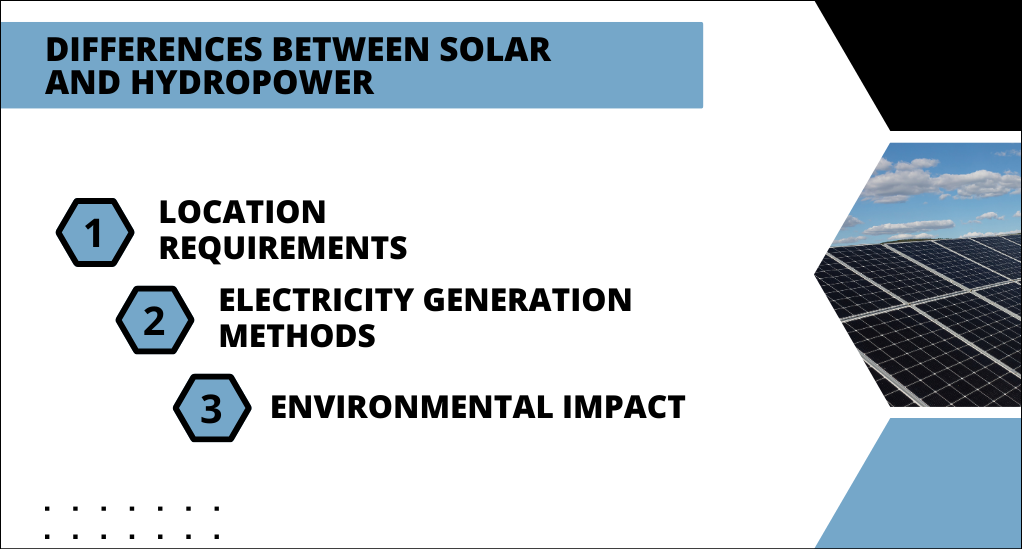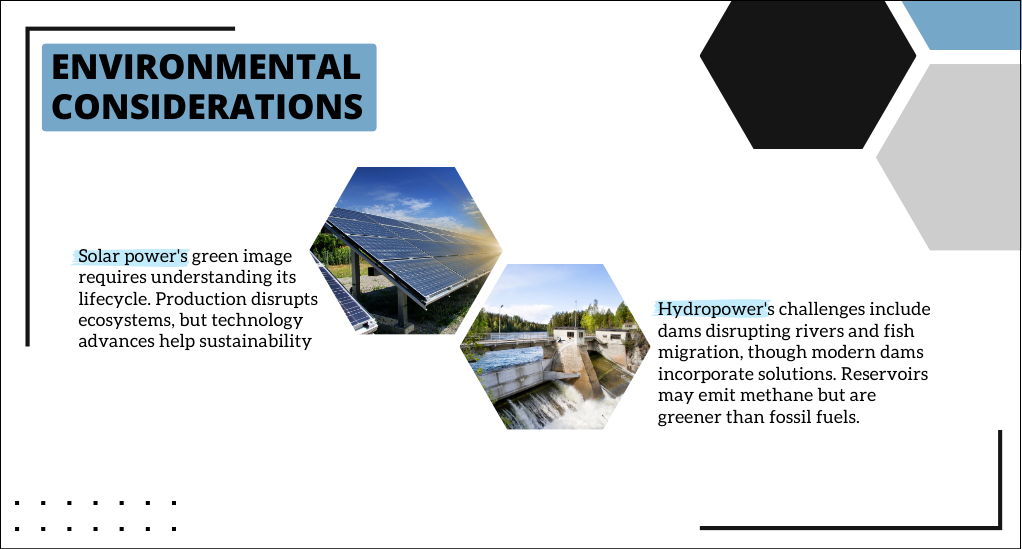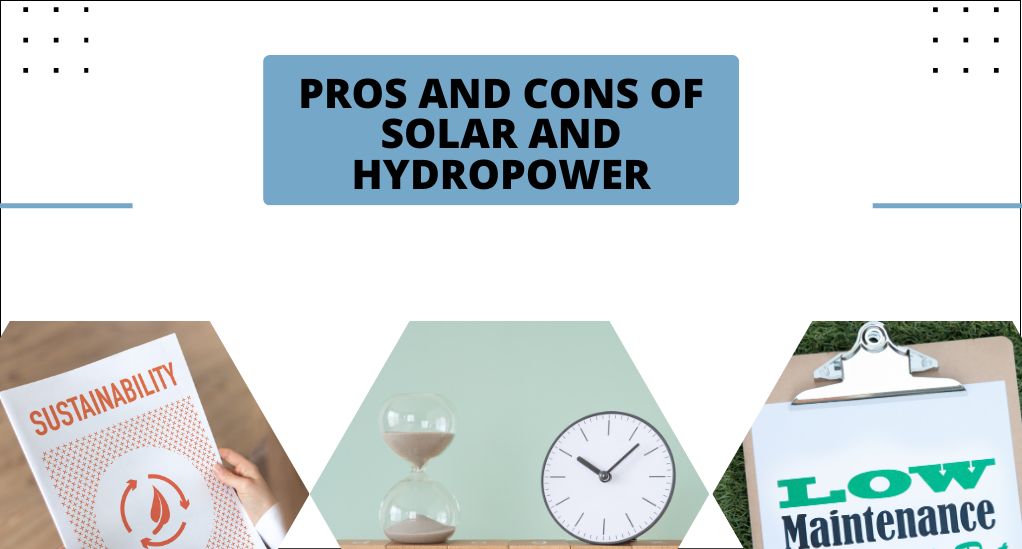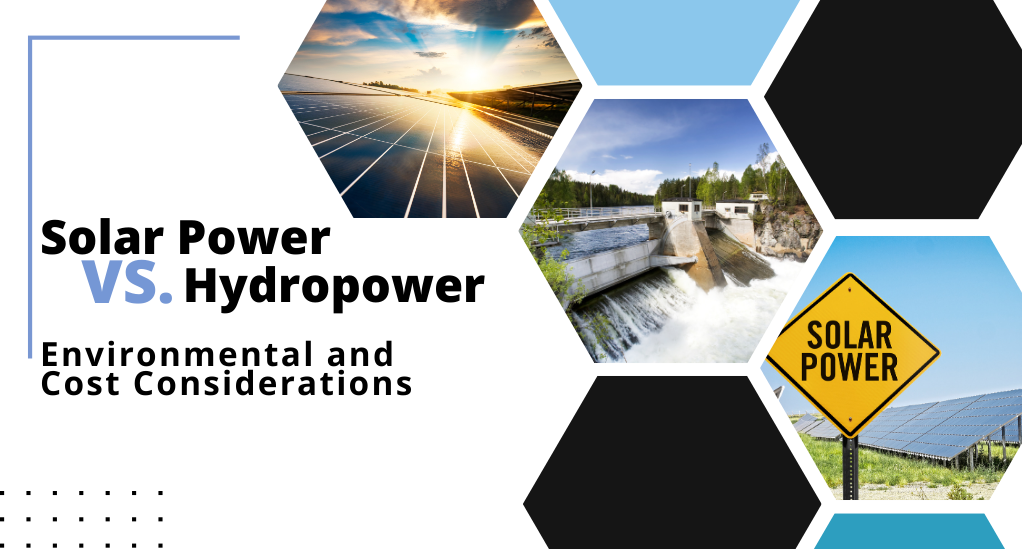The quest for sustainable energy sources has been a focal point of scientific and economic discussions for decades. As the world grapples with the challenges of climate change and the pressing need to reduce carbon emissions, renewable energy sources like solar and hydropower have emerged as frontrunners in the race to replace fossil fuels. This section delves into the rich history and evolution of both these energy sources, setting the stage for a deeper exploration of their economic, environmental, and cost considerations.
Tracing the Evolution of Solar and Hydropower
The journey of solar and hydropower from their rudimentary applications in ancient civilizations to their sophisticated modern-day implementations is a testament to human ingenuity and adaptability. While the ancients harnessed the sun’s warmth for basic needs and utilized the kinetic energy of flowing water to power rudimentary machinery, today’s world sees vast solar farms capturing sunlight across acres and gigantic hydroelectric dams generating power for entire cities.
This evolution not only reflects technological advancements but also underscores a growing recognition of the need for sustainable energy solutions. As we trace the milestones of these two renewable energy sources, we gain insights into their potential and the challenges they’ve overcome, offering a clearer perspective on their roles in our future energy landscape.
Solar Power: Harnessing the Sun’s Energy

Solar power is not a new concept. For centuries, civilizations have recognized the sun as a potent source of energy. Ancient Greeks, for instance, designed their homes to capture the sun’s warmth during winter. However, the modern age of solar power began with the introduction of photoelectric cells in the early 20th century. These cells, made primarily from silicon, have the ability to convert sunlight directly into electricity. Over the years, advancements in technology have led to the development of solar panels and massive solar farms, which are now common sights in many parts of the world.
Hydropower: Tapping into Water’s Potential

Much like solar power, hydropower has ancient roots. Flowing water has been used as a source of energy for millennia. From turning large wheels in ancient civilizations to power sawmills and granaries, to the sophisticated hydroelectric dams of today, water has always been a reliable source of energy. The world’s first hydroelectric power plant began its operations in Wisconsin in 1882, marking a significant milestone in the history of energy production. This method involves using the kinetic energy of flowing water to spin turbines, which in turn generate electricity.
Table: A Brief Timeline of Solar and Hydropower
| Year | Solar Power Milestones | Hydropower Milestones |
|---|---|---|
| Ancient Times | Sunlight used for heating and cooking | Water wheels powered machinery |
| 1882 | – | Water-powered machinery |
| Early 1900s | Introduction of photoelectric cells | Expansion of hydroelectric dams worldwide |
| Late 20th Century | Development of solar panels and farms | Advancements in turbine technology |
| Present | Solar energy contributes significantly to global energy mix | Hydropower remains a major renewable energy source |
Primary Differences Between Solar and Hydropower
While both solar and hydropower are celebrated as champions of renewable energy, they possess distinct characteristics that set them apart. These differences span across various dimensions, from their foundational requirements to their environmental footprints.

1. Location Requirements
The most evident distinction lies in their geographical prerequisites. Solar energy, as the name suggests, thrives in regions abundant with sunlight. These areas often have minimal cloud cover and are typically devoid of tall structures or dense foliage that might obstruct the sun’s rays. Deserts and open plains, for instance, are ideal for large-scale solar farms.
Hydropower, on the other hand, is contingent on the presence of substantial water bodies. Whether it’s a naturally occurring river with a strong current or a massive reservoir behind a dam, the essence of hydropower is the kinetic energy of flowing water. This often means that hydroelectric plants are situated near mountains or valleys, where rivers flow with vigor.
2. Electricity Generation Methods
The mechanics of electricity generation also vary significantly between the two. Solar power primarily relies on photovoltaic cells. When sunlight strikes these cells, it excites electrons, leading to the generation of an electric current. In contrast, hydropower leverages the movement of water. As water flows or falls, it spins turbines connected to generators, converting kinetic energy into electricity.
3. Environmental Impact
Both solar and hydropower have environmental considerations to account for. Solar power’s primary environmental concerns arise during the manufacturing and disposal of solar panels. The extraction of materials, especially rare metals, and the eventual disposal or recycling of panels at the end of their lifecycle, can have ecological implications.
Hydropower’s environmental challenges are more immediate. The construction of large dams can alter river ecosystems, affecting aquatic life and sometimes even displacing local communities. Moreover, stagnant water in reservoirs can lead to methane emissions, a potent greenhouse gas.
Despite these challenges, it’s essential to recognize that both solar and hydropower have significantly lower environmental footprints compared to fossil fuels. Their contributions to reducing carbon emissions and curbing global warming are undeniable.
Environmental Considerations
The quest for renewable energy is not just about finding alternatives to fossil fuels; it’s also about ensuring that these alternatives are sustainable and have minimal adverse impacts on the environment. Both solar and hydropower come with their set of environmental considerations.

Solar Power’s Ecological Footprint
While solar power is heralded for its green credentials, it’s essential to understand its entire lifecycle to gauge its environmental impact. The production of solar panels involves mining for materials like quartz and metals. This extraction process can sometimes disrupt local ecosystems. However, advancements in technology are paving the way for more sustainable extraction methods.
Once operational, solar farms have a negligible carbon footprint. But as panels reach the end of their approximately 25-year lifespan, disposal becomes a concern. Efforts are underway to enhance recycling methods, ensuring that old panels don’t end up in landfills.
Hydropower’s Interaction with Nature
Hydropower’s most significant environmental challenge is arguably the dams themselves. While they are marvels of engineering, dams can obstruct river flow, affecting aquatic ecosystems. Fish migration is a notable concern, with species like salmon often finding their paths blocked by these massive structures. To mitigate this, many modern dams now include fish ladders or other mechanisms to aid in migration.
Reservoirs created by dams can also lead to submerged vegetation, which, when decomposed, releases methane—a greenhouse gas far more potent than carbon dioxide. However, it’s worth noting that the overall greenhouse gas emissions from hydropower are still significantly lower than those from fossil fuels.
Balancing Energy Needs with Environmental Stewardship
It’s clear that while both solar and hydropower offer substantial environmental benefits over traditional energy sources, they are not without their challenges. The key lies in continuous innovation and responsible practices to minimize adverse impacts. As technology advances and our understanding of ecosystems deepens, the renewable energy sector is poised to become even more environmentally friendly.
Economic and Cost Implications
Transitioning to renewable energy is not just an environmental imperative but also an economic one. The costs associated with establishing and maintaining solar and hydropower infrastructures play a crucial role in determining their viability and adoption rate.
Investing in the Sun: The Economics of Solar Power
The initial costs of setting up solar farms or installing rooftop solar panels can be substantial. However, the decreasing prices of photovoltaic cells and increased efficiency mean that the return on investment is faster than ever before. Once installed, operational costs are relatively low, and with government incentives and tax breaks in many regions, solar power has become an economically attractive option.
The Price of Harnessing Water
Hydropower projects, especially large-scale dams, require significant capital investment. The construction of dams, installation of turbines, and setting up of power transmission systems can be expensive. However, once operational, hydroelectric plants have low maintenance costs and can generate electricity consistently, making them economically competitive in the long run.
The Bigger Picture: Long-term Savings and Societal Benefits
While upfront costs are a consideration, it’s essential to view renewable energy investments in the broader context of long-term benefits. Both solar and hydropower offer savings in terms of reduced fuel costs, as they rely on the sun and water—resources that are free. Additionally, by reducing dependence on fossil fuels, societies can avoid the volatile price fluctuations associated with oil and gas. Not to mention, the societal benefits of cleaner air, fewer greenhouse gas emissions, and a move towards a more sustainable future are invaluable.
Pros and Cons of Solar and Hydropower

Every energy source, regardless of its sustainability or efficiency, comes with its set of advantages and challenges. To make informed decisions about energy consumption and infrastructure development, it’s crucial to understand the strengths and limitations of both solar and hydropower.
Solar Power: Illuminating the Benefits and Challenges
Pros:
- Sustainability: Solar power taps into the sun, an inexhaustible energy source, ensuring long-term energy security.
- Decreasing Costs: With technological advancements, the costs of solar panels and installations have been steadily decreasing.
- Scalability: Solar installations can range from small rooftop panels for individual homes to vast solar farms for cities.
- Low Maintenance: Once installed, solar panels require minimal maintenance and have a long operational life.
Cons:
- Intermittency: Solar power generation is dependent on sunlight, making it inconsistent during cloudy days or nighttime.
- Land Use: Large solar farms require significant land areas, which can sometimes lead to habitat disruption.
- Initial Costs: Despite decreasing prices, the initial investment for solar installations can be high for some.
Hydropower: Navigating the Flow of Benefits and Challenges
Pros:
- Reliability: Unlike solar, hydropower can generate electricity consistently, as long as there’s flowing water.
- Storage Capability: Reservoirs can store water, allowing for electricity generation during periods of high demand.
- Long Lifespan: Hydroelectric plants have a long operational life, often exceeding several decades.
- Multipurpose: Dams can also provide water supply, flood control, and recreational opportunities.
Cons:
- Environmental Impact: Dams can disrupt local ecosystems, affecting fish migration and altering river dynamics.
- High Initial Costs: Building dams and hydroelectric plants require significant capital investment.
- Geographical Limitations: Hydropower plants need specific locations with sufficient water flow, limiting where they can be built.
The Future of Renewable Energy: A Confluence of Sun and Water
As the world grapples with the pressing challenges of climate change and energy security, the roles of solar and hydropower have never been more critical. While each has its unique strengths and challenges, their combined potential can drive a sustainable energy revolution.
Solar power, with its decreasing costs and increasing efficiency, is poised to become a dominant force in regions with abundant sunlight. Its scalability ensures that both developed and developing nations can harness its benefits, from powering mega-cities to electrifying remote villages.
Hydropower, with its reliability and long history, will continue to be a cornerstone of renewable energy, especially in regions with significant water resources. Its ability to provide consistent power makes it a valuable asset in the renewable energy mix.
Conclusion
In the ever-evolving landscape of renewable energy, both solar and hydropower stand out as beacons of hope and innovation. Their histories, marked by human ingenuity and adaptability, offer a glimpse into a future where energy is not just abundant but also sustainable. As we navigate the challenges of the 21st century, from climate change to energy security, the combined potential of sun and water provides a promising path forward.
Embracing the strengths of these energy sources, while addressing their challenges, is crucial for our global community. As we transition away from fossil fuels, the synergy of solar and hydropower will undoubtedly play a pivotal role in shaping a cleaner, greener, and more resilient world for generations to come.

